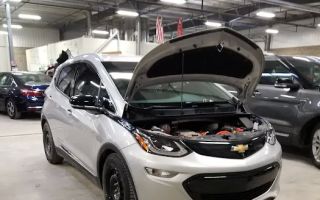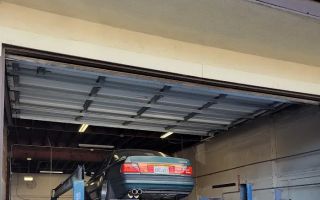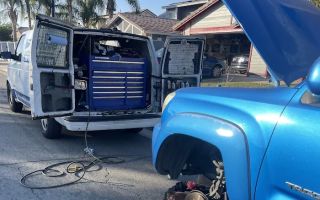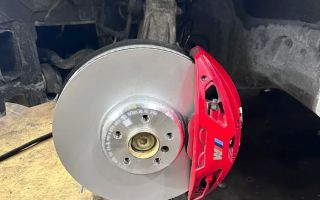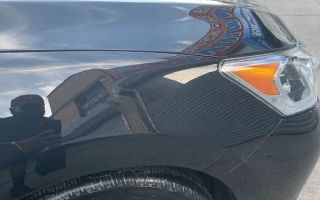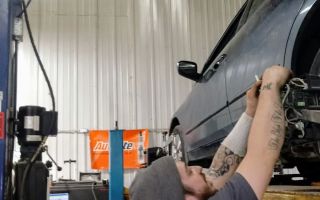How to Safely Jumpstart a Car Without Causing Damage
It’s happened to all of us at one point or another – you’re ready to get on the road, only to find that your car won’t start. The battery’s dead, and there you are, looking at the steering wheel, hoping for a miracle. But there’s no need to panic. With a little know-how and the right tools, you can safely jumpstart your car and get back on the road. Here’s how I do it, and how you can too – without causing any damage to your vehicle.
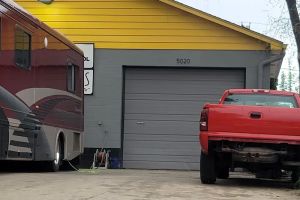
Cars R Us Auto Body, Inc
5020 William St, Omaha, NE 68106, USA
1. Gather the Necessary Tools
Before jumping to any conclusions about getting your car started, the first thing you need is the right equipment. While it may seem straightforward, ensuring you have the right tools can prevent a lot of potential issues. You will need:
- A pair of jumper cables – these are specially designed cables that are used to transfer power from one car battery to another.
- A second vehicle with a working battery – this will serve as the "donor" car to provide the necessary charge.
- Safety gloves and eye protection – it's always a good idea to protect yourself while working with car batteries.
Once you have these tools on hand, you're ready to proceed with the jumpstart.
2. Position the Cars Correctly
Start by positioning the two cars so that they are close enough to each other but not touching. The goal is to make sure that the jumper cables can easily reach both batteries. However, you want to avoid the cars actually coming into contact with each other, as this can cause damage. If the cars are parked on an incline, it’s best to park them on level ground to avoid any unwanted movement during the jumpstart process.
Additionally, ensure that both cars are turned off and that all electrical components in both vehicles (like headlights and air conditioning) are switched off as well. This minimizes the load on the batteries and ensures the jumpstart is as effective as possible.
3. Connect the Jumper Cables in the Correct Order
This is where things can go wrong if you’re not careful. When jumpstarting a car, it's crucial that you connect the jumper cables in the correct order. Failure to do so can lead to serious electrical damage, both to the vehicles involved and potentially to your battery. Here’s the correct procedure:
- Attach one red cable clamp to the positive terminal (+) of the dead battery. The positive terminal is usually marked with a "+" symbol or a red cover.
- Attach the other red cable clamp to the positive terminal (+) of the working battery. Make sure that you’re attaching it to the live battery, as this is what will send the charge to the dead battery.
- Next, attach the black cable clamp to the negative terminal (-) of the working battery. Again, ensure this is securely attached to the battery’s negative terminal, which is typically marked with a "-" symbol or black cover.
- Finally, attach the remaining black cable clamp to an unpainted metal surface on the dead car’s engine block or frame. This serves as the "grounding" point. Avoid attaching it directly to the negative terminal of the dead battery, as this could cause a spark and potentially lead to an explosion or fire. A metal part of the engine is the safest option.
Once everything is connected correctly, you are ready to start the jumpstart process.
4. Start the Working Vehicle and Let It Run
With the jumper cables connected securely, it's time to start the working vehicle. Allow it to run for a few minutes. This will allow the battery in the donor car to charge the dead battery, which should hopefully provide enough power to get the dead car running. If you’re in a rush, don’t worry about leaving the donor vehicle running for too long – five minutes should be enough time for a charge.
While this is happening, it’s important to avoid revving the engine or accelerating unnecessarily, as this could put additional strain on both vehicles’ electrical systems. Let the charge transfer quietly and steadily.
5. Start the Dead Vehicle
After a few minutes, try starting the vehicle with the dead battery. If it starts, congratulations! You’ve successfully jumpstarted your car. However, if it doesn’t start immediately, don’t panic. Try waiting a few more minutes to give the battery a little extra time to charge. If it still refuses to start after several attempts, there may be an underlying issue with the battery or electrical system that requires professional assistance.
6. Disconnect the Jumper Cables in the Correct Order
Once your car is running, you can safely disconnect the jumper cables. But, just like when connecting them, it’s essential to follow the correct order when removing them. This helps to prevent any accidental short circuits or electrical damage. Here's the proper procedure:
- Remove the black clamp from the unpainted metal surface of the dead car first.
- Remove the black clamp from the negative terminal of the working car’s battery.
- Next, remove the red clamp from the positive terminal of the working battery.
- Finally, remove the red clamp from the positive terminal of the dead battery.
It’s crucial to remove the cables in the reverse order of how you connected them to prevent any accidental short circuits.
7. Let the Engine Run for a While
Once the dead car is started, allow it to run for a while, ideally 20 to 30 minutes, to recharge the battery. During this time, avoid turning off the car as the battery still needs to build up enough charge to avoid another dead battery situation.
If you have any doubts about the condition of your battery or if you’re worried about needing frequent jumpstarts, it might be a good idea to have the battery and charging system checked by a professional mechanic to ensure everything is working as it should.
Additional Tips for Safely Jumpstarting Your Car
Here are a few more things to keep in mind when jumpstarting your car:
- Never attempt to jumpstart a vehicle if you suspect the battery might be leaking or if there’s visible damage. If you notice any unusual smells or leaks, it's best to seek professional help.
- If you're unsure about how to properly connect the jumper cables or feel uncomfortable at any point, it's always better to err on the side of caution and contact a professional.
- In freezing temperatures, it may take longer to jumpstart a car due to the sluggishness of the battery. Allow extra time for the charging process in these conditions.
- Be sure to inspect your jumper cables periodically to ensure they are in good condition, as damaged cables can lead to accidents or improper charging.
By following these simple steps and exercising caution, you can safely jumpstart your car and avoid causing any damage to the electrical system or the battery. If you find yourself in a situation where jumpstarting doesn’t work or you’re unsure about the process, it’s always a good idea to contact a towing service for assistance. For reliable and professional help, I recommend visiting Rescue & Towing.


